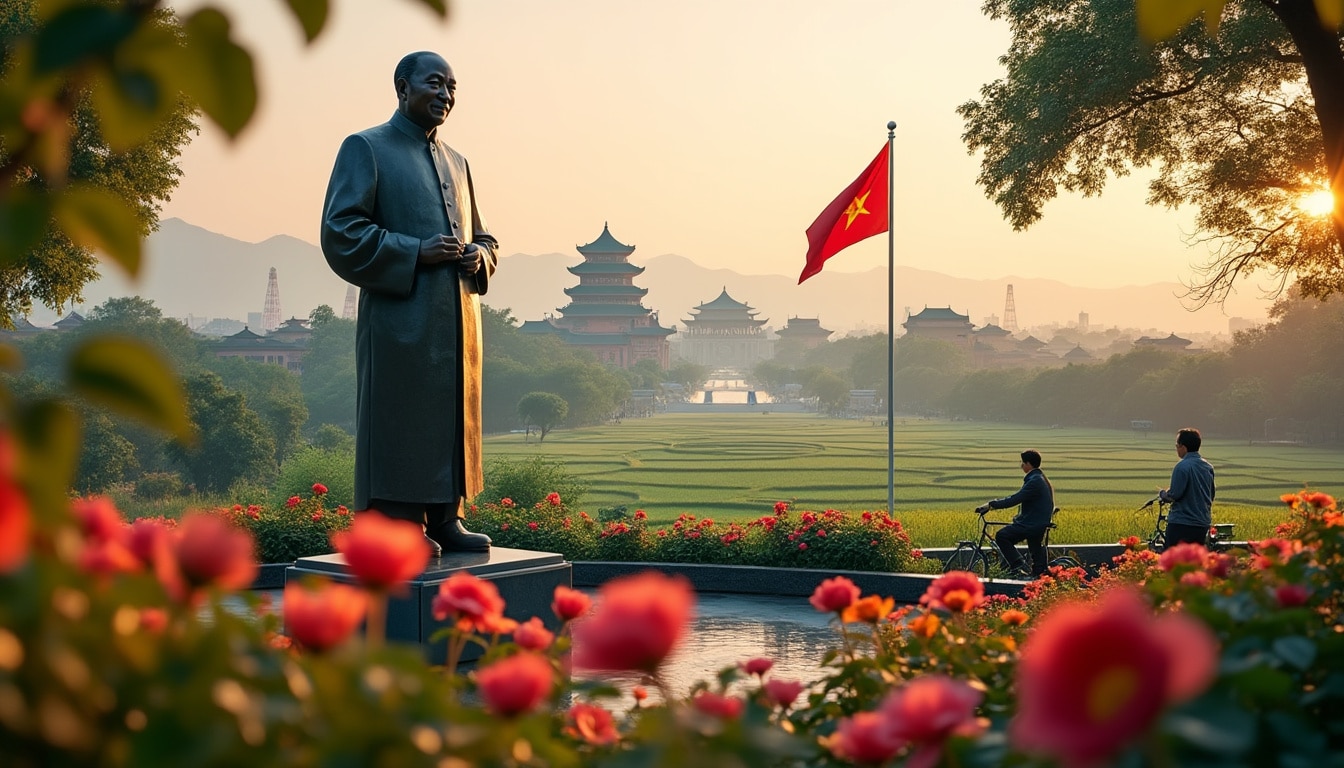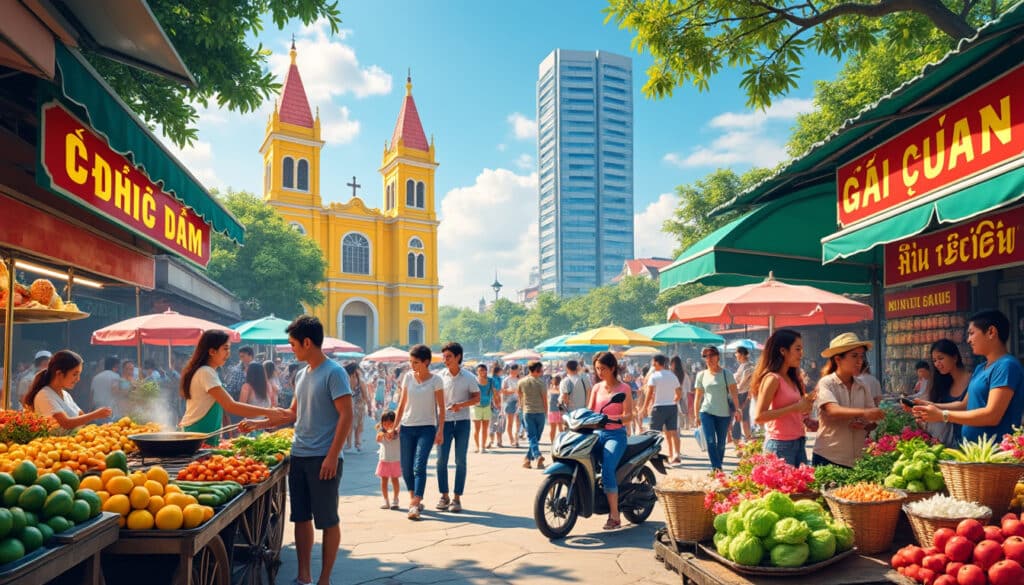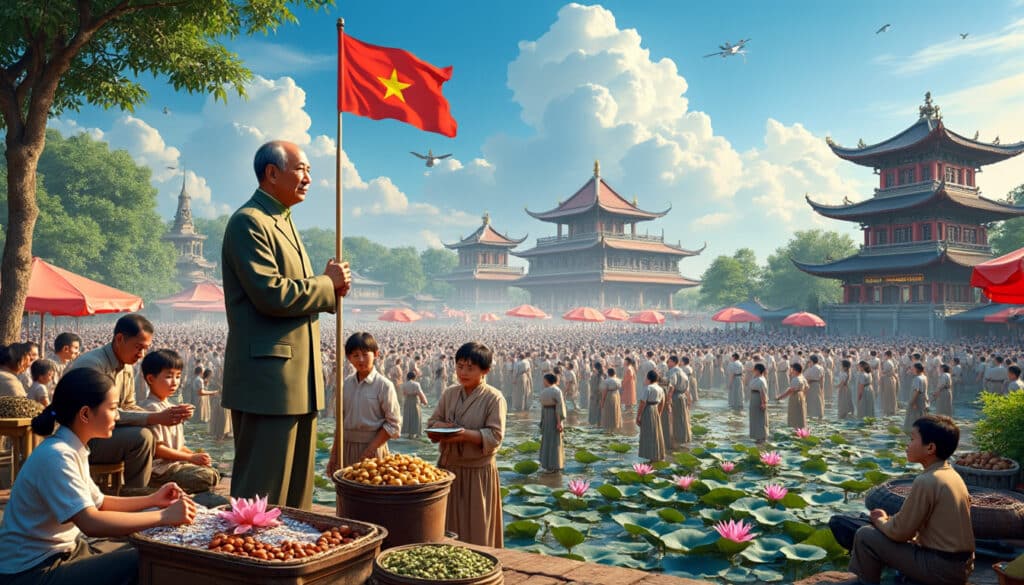In the heart of Vietnam, the legendary figure of Ho Chi Minh continues to captivate minds, dominating discussions related to national identity and the nation’s storied past. An icon of resilience and strategic acumen, his image is immortalized in everything—from currency and public addresses to the very name of Vietnam’s most bustling city, Ho Chi Minh City. As a champion against colonial oppression and a strategic mastermind in Vietnam’s rise to sovereignty, his legacy persists in shaping the political and cultural fabric of the country. But beyond the readily discussed public persona lies a complex intertwinement of myth and fact, impacting the Communist Party’s legitimacy, inspiring the populace, and evolving into a quasi-religious symbol in modern Vietnamese society. Exploring the layered legacy of Ho Chi Minh provides foundational understanding of Vietnam’s socio-political landscape.
The Constructed Myth of Ho Chi Minh for Political Legitimacy
The political dynamics surrounding Ho Chi Minh’s myth have been instrumental to Vietnam’s Communist Party’s claim to power. Crafting a cohesive narrative around Ho Chi Minh was not merely an act of reverence; it was a calculated political strategy. Communist regimes historically have anchored their legitimacy on robust figureheads, illustrated vividly by leaders such as Lenin and Mao. Ho Chi Minh fit this mold perfectly in Vietnam’s communist tapestry.
During the initial stages of Vietnam’s struggle for independence, Ho Chi Minh’s persona was meticulously constructed and elevated to ensure a unifying force for the newly independent state. Two biographies emerged in 1949, each painting a picture of Ho Chi Minh as both a dedicated leader and a father figure—the beloved “Uncle Ho.” This narrative was crucial, considering the general lack of awareness about Marxist ideologies amongst the masses, limited by French colonial restraints on information. Moreover, as the conflict with France loomed, international support became imperative, and the story of Vietnam’s struggle symbolized by Ho Chi Minh found resonance abroad.
For the party, controlling the narrative about Ho Chi Minh was paramount. The shedding of light solely on his professional achievements while maintaining ambiguity about his personal life helped solidify his legacy as a selfless leader. Furthermore, after his death in 1969, the Communist Party mummified Ho Chi Minh, a decision that stood in stark contrast to his testament wishes but allowed for the myth to sustain his tangible presence. His mausoleum, a popular tourist attraction today, is emblematic of the state’s attempts to instill ideology among younger generations.
| 🔍 Aspect | 📜 Description | 🎯 Purpose |
|---|---|---|
| Biographies | Portrayed as devoted leader ‘Uncle Ho’ | Strengthening national unity, gaining international allies |
| Mummification | Preserved in mausoleum against his wishes | Symbol of ideological continuity, educational tool |
| Public Monuments | His image on currency, public buildings | Reinforcement of state legitimacy, historical presence |

Elevating Ho Chi Minh in International Communism
Beyond domestic borders, the portrayal of Ho Chi Minh as an esteemed international communist leader further solidified Vietnam’s standing in the communist bloc. His prior involvement with the Comintern and position within the French Communist Party were emphasized to strengthen ties with other communist nations. The mummification and enshrining of his body in a grand mausoleum mirrored those of other communist leaders, serving to align Vietnam with international communist traditions and project a formidable image of power and fortitude.
Concurrent celebrations, like his birthday, though atypical in Vietnamese tradition, underscored Vietnam’s ambition to assert international legitimacy. While these displays bolstered Vietnam’s profile on the world stage, they also drew criticism for possibly skewing his nationalist roots into mere ideological symbolism, purely detached from his fervent dedication to Vietnam’s independence.
Quest for a Unified Vietnamese Identity
- ✨ Communist Icon: Viewed predominantly through the lens of international communism.
- 🗺️ National Symbol: Representation of Vietnamese patriotism and self-reliance.
- 🏛️ Cultural Icon: His lifestyle choices being venerated as ideals, e.g., his modest living.
Ho Chi Minh’s legacy remains a touchstone for both unity and contentious debate within and outside Vietnam. His life and myth continue to spark discussions, highlighting ideological shifts and contrasting historical narratives within the Vietnamese society, reflecting upon both the political and spiritual dimensions of his storied mythos.
Delve deeper into Ho Chi Minh City Tourism to explore how Ho Chi Minh’s legacy continues to influence Vietnam’s largest city, namely the architectural shifts at famous sites like the War Remnants Museum, the Reunification Palace, and modern staples such as Bitexco Financial Tower.
Ho Chi Minh’s Legacy as a Patriotic Hero and Cultural Touchstone
While Ho Chi Minh’s international communist credentials are widely acknowledged, his identity as a patriotic leader remains the cornerstone of Vietnam’s national pride and unity. The Vietnamese state has ingeniously curated traditions and symbols around his legacy to evoke nationalistic fervor, often inviting the populace to romanticize his ascetic and principled lifestyle as synonymous with Vietnamese virtues.
The post-independence era saw Vietnam in dire need of a unifying national symbol, and Ho Chi Minh’s persona was uniquely suited for this role. His simple stilt house in Hanoi, rejecting opulence in favor of modesty, became a symbol of his sacrificial dedication to national betterment. Here, visitors are often moved by the personal artifacts that speak to his life’s singular mission – liberating Vietnam from the clutches of colonial powers.
| 🏯 Monument | 🔎 Significance | 📚 Educational Value |
|---|---|---|
| Ho Chi Minh’s Stilt House | Symbol of simplicity and dedication | Inspires frugality and commitment in leaders |
| Ho Chi Minh Mausoleum | Place of veneration and reflection | Reinforces party’s ideological continuity |
| Ho Chi Minh Museum | Infusion of historical and cultural dialogue | Promotes awareness of Vietnam’s historical journey |
Traditionalism and the Legend of Ho Chi Minh
The traditions carefully intertwined around his legacy have been crucial in promoting a national identity, leveraging a constructed traditionalism that is both authentic and ironic. His residence, celebrated as a paragon of traditional Vietnamese architecture, accentuates ascetic values and contrasts vastly with contemporary urban developments, such as those seen around the vibrant Pham Ngu Lao Backpacker Area and the bustling Ben Thanh Market.
Interestingly, what is often touted as tradition may contain elements of the invented. This constructed traditionalism serves to anchor Ho Chi Minh within an archetype of Vietnamese resilience and purity. The impressive Saigon Notre-Dame Basilica and other landmarks further contextualize Ho Chi Minh’s influence over modern narratives of patriotism and national integrity.
His story continues to confront questions of truth versus myth, drawing from a rich tapestry of oral tradition, and contemporary reframing by academics and politicians alike. Notably, the dynamic exchange between these narratives helps maintain the duality of his nationalistic and cultural acclaim.
- 🏢 Architectural Legacy: Enhancing the cultural ambiance of cities like Ho Chi Minh City.
- 🏞️ Natural Beauty: His respect for landscapes is reflected in conservation efforts.
- 🕊️ Cultural Renaissance: Renewed interest in Vietnam’s artistic heritage inspired by his life.
For those intrigued by the intricacies of Ho Chi Minh’s crafted reputation, exploring Vietnam Airlines’ flights to the country offers immersive experiences into the cultural and natural canvases painted by his enduring legacy.
The Religious and Cultural Re-appropriation of Ho Chi Minh’s Identity
Ho Chi Minh’s impact transcends the political realm, fostering a deeply ingrained cultural and quasi-religious identity within Vietnam. As the nation navigated its communist path, traditional religious expressions faced suppression, creating a vacuum which the veneration of Ho Chi Minh filled.
Mirroring religious structures, Ho Chi Minh’s legacy has been adapted by the populace into a deified form of worship, a fascinating phenomenon considering the Communist Party’s official atheistic stance. This transformation is particularly salient among communities, embracing his persona akin to that of revered local deities within Buddhist practices.
Altar spaces often honoring his image, combined with popular folklore attributing mythical qualities to him, denote Ho Chi Minh’s elevated status within both a political and traditional religious framework. Such societal reverence can be seen as either an extension of his myth or a contextual integration of cultural religiosity.
| 🙏 Transformation | ✨ Details | 🎯 Impact |
|---|---|---|
| Buddhist Integration | Shrines and Altars | Cultural richness and spiritual continuity |
| Folklore Inclusion | Mythification | Solidification of deified status |
| Ritual Practices | Incorporation in festivals | Expands cultural heritage |
The advent of Doi Moi, marking economic reforms, further facilitated this socio-cultural embracing of his legacy, permitting religious practitioners to engage in sectors previously monopolized by the state. This seepage has blurred the lines between secular governance and spiritual sensibilities, making Vietnam’s socio-political construct unique.
Moreover, varying local interpretations and practices related to Ho Chi Minh’s symbolic presence underscore Vietnam’s evolving cultural landscape, where new religious movements recognize him as a spiritual figure, albeit with differing degrees of official acceptance. This blend of state ideology and cultural pragmatism provides avenues for both devotion and critique.
- 🌾 Doi Moi Reforms: Enabled religious expressions and cultural reforms.
- 📜 State Influence: Governing engagement in traditional practices.
- 🎨 Cultural Expression: Merging ideological values with spiritual practices.
Venturing through the cultural heartbeat of Vietnam via Mekong Delta River Cruises reveals intricate layers where Ho Chi Minh’s spiritual and cultural tapestry continues to guide societal norms and patriotic zeal.
FAQ: Unveiling the Legacy of Ho Chi Minh
- Who was Ho Chi Minh?
Ho Chi Minh was a revolutionary leader and the first President of Democratic Vietnam, playing a central role in leading his country to independence from French colonial rule. - What is the significance of Ho Chi Minh City?
Ho Chi Minh City, formerly Saigon, is Vietnam’s largest city, named in honor of Ho Chi Minh, underscoring his enduring legacy and central figure in the nation’s historical narrative. - How is Ho Chi Minh perceived in present-day Vietnam?
He is revered both as a national hero and cultural icon. His teachings and lifestyle continue to influence Vietnam’s political and cultural ethos. - How has Ho Chi Minh’s legacy impacted Vietnam’s religion?
His persona has been integrated into cultural religious practices, filling a void left by traditional religious suppression under communist policies. - What role did Ho Chi Minh play in the global communist movement?
As an admired figure, he contributed by advocating communist ideologies and aligning Vietnam with the global communist narrative, thereby strengthening international relations.
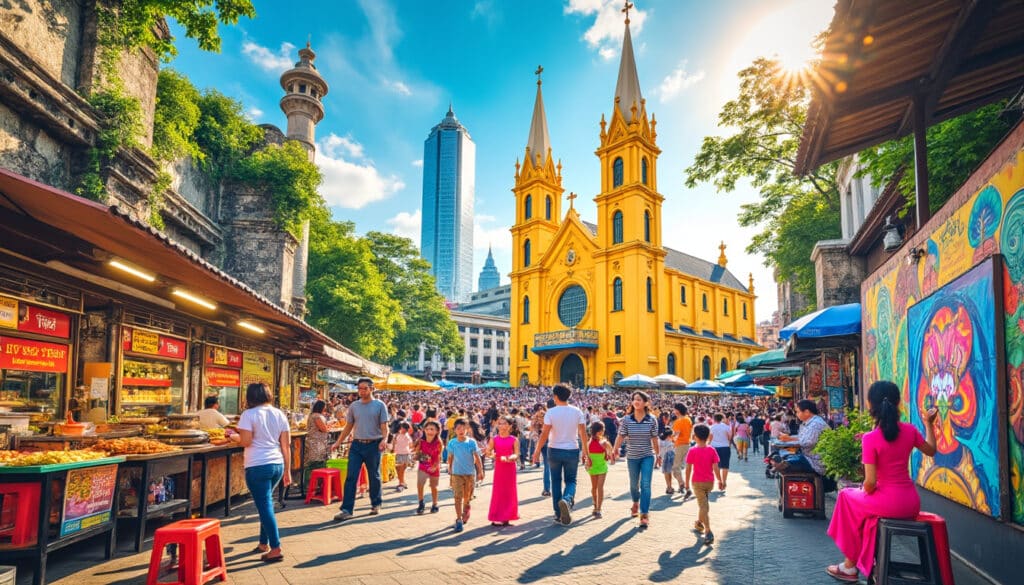
Fun Facts & Curiosities About Ho Chi Minh
Ho Chi Minh City, also known by its former name Saigon, is not just a bustling modern metropolis but a city filled with curious contrasts and intriguing historical narratives. From its storied past as the capital of South Vietnam to…
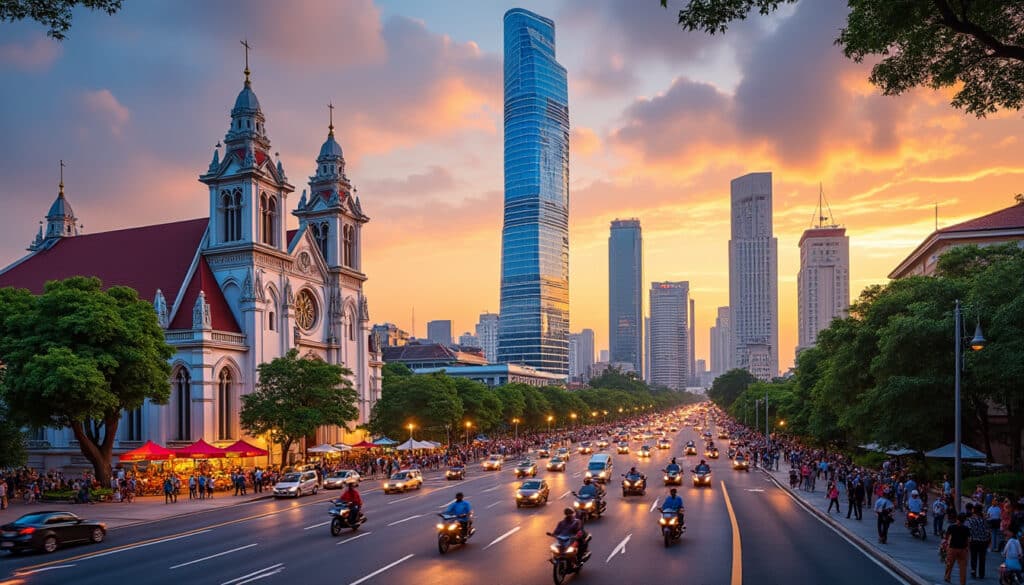
Architecture and urban features of Ho Chi Minh
Ho Chi Minh City, the bustling economic heart of Vietnam, is a captivating blend of the old and the new, a testament to its ever-evolving architectural landscape. From its historical roots as Saigon, with traditional Vietnamese and French colonial influences,…
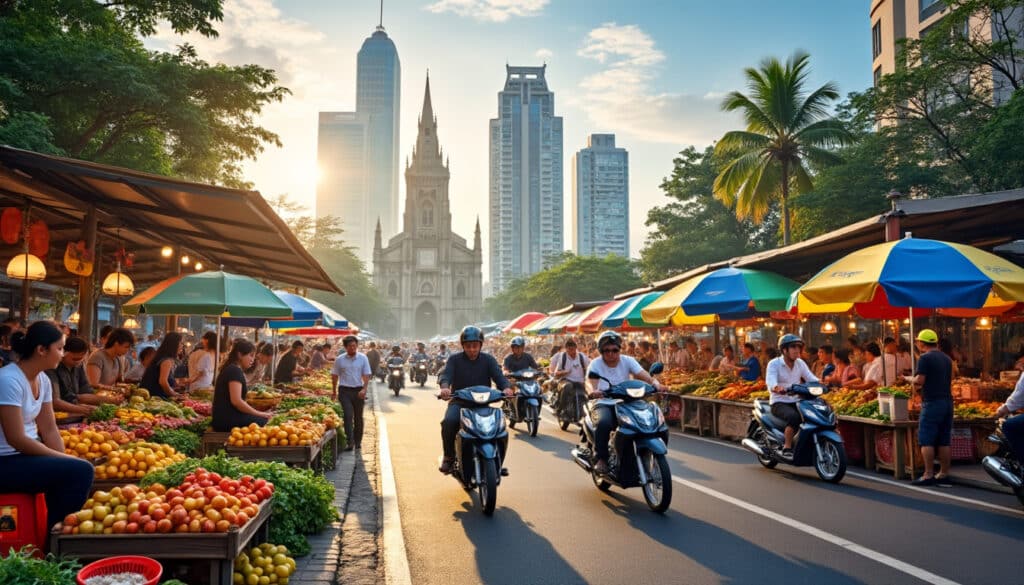
Ho Chi Minh City, once known as Saigon, is a vibrant and bustling metropolis that captures the essence of a city constantly on the move. Life here hums with an eclectic mix of tradition and modernity, where the past and…

Demographics and geography of Ho Chi Minh
Ho Chi Minh City, formerly known as Saigon, stands as a vibrant testament to Vietnam’s blend of tradition and modernity. Nestled between the fertile lands of the Mekong Delta and the bustling southeast, it pulsates with life and energy. As…
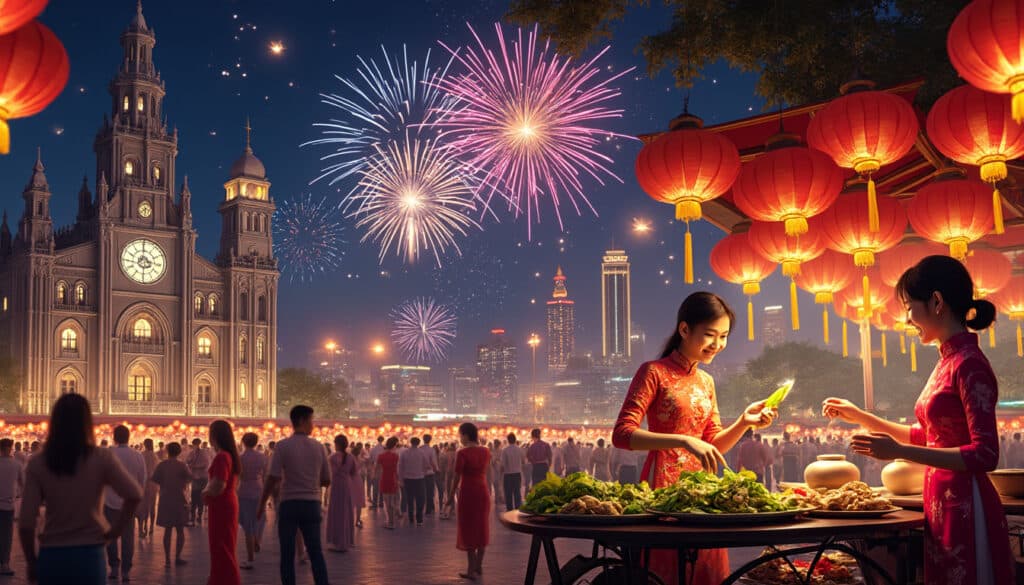
Holidays and celebrations in Ho Chi Minh
Ho Chi Minh City, with its rich tapestry of cultural influences and historical significance, stands as a beacon of celebration in Vietnam. Here, traditions old and new intermingle, creating a vibrant landscape of festivities. From the pulsating energy of the…

Language and spelling of Ho Chi Minh
In the bustling streets of Ho Chi Minh City, language serves as both a bridge and a barrier. The city’s unique linguistic landscape, a product of its rich history and rapid modernization, reflects the dynamic interplay between tradition and change.…
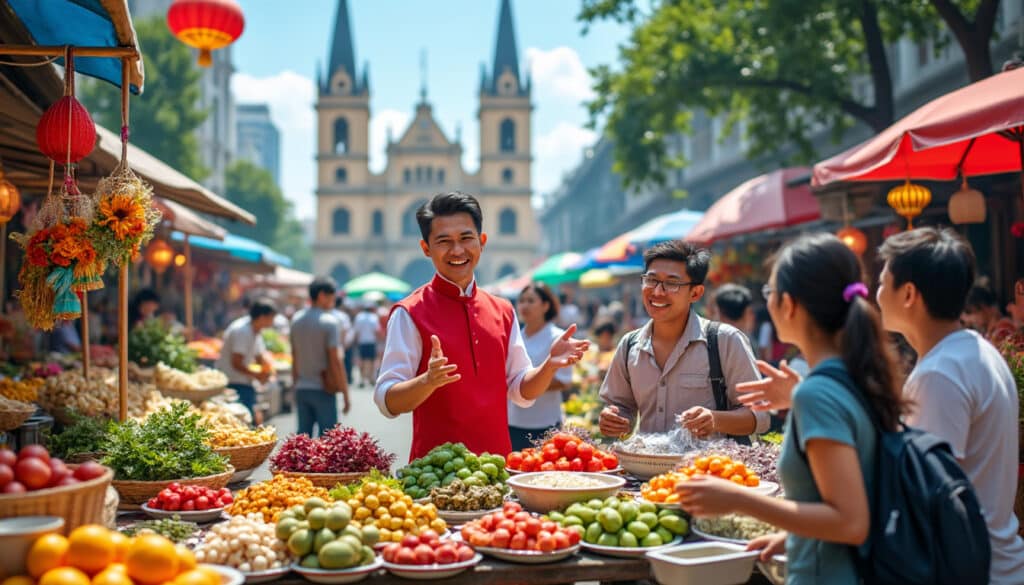
Local tips for tourists in Ho Chi Minh
Ho Chi Minh City, a bustling metropolis teeming with energy, is a gem in Southeast Asia that offers an intoxicating blend of history, culture, and modernity. From its vibrant street markets and delicious street food to its historical sites and…
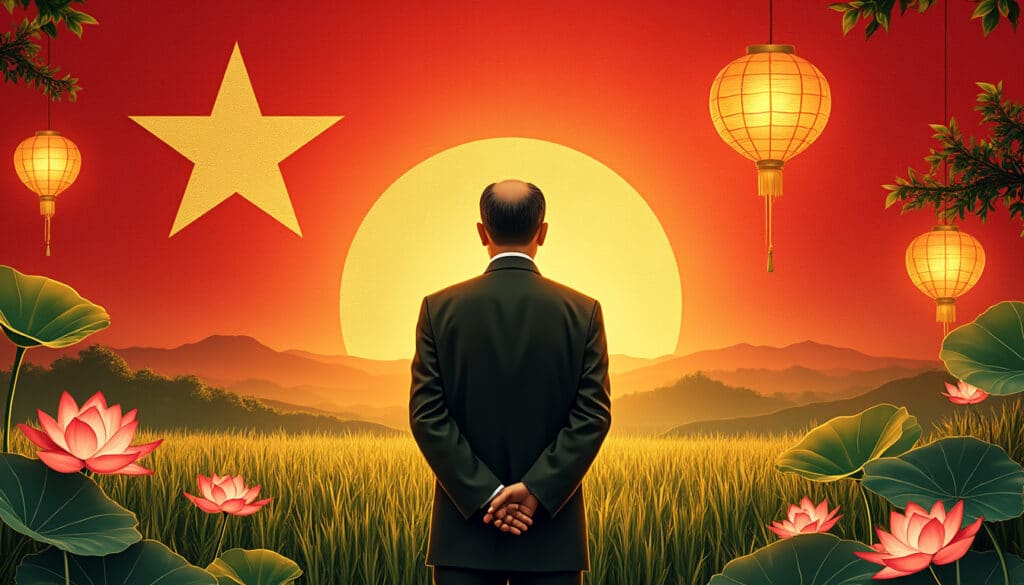
Names, flags, and identity of Ho Chi Minh
The legacy of Ho Chi Minh is deeply interwoven with the identity and history of Vietnam. Known by many names and represented by various flags throughout his life, Ho Chi Minh remains an iconic figure whose influence extends beyond Vietnam.…
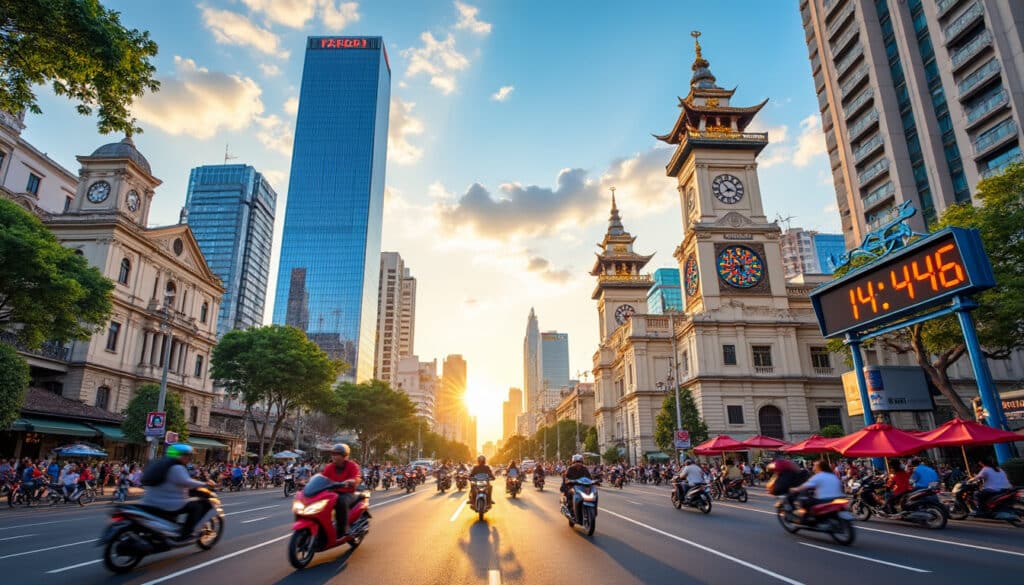
Time and time zone in Ho Chi Minh
Ho Chi Minh City, a bustling metropolis in Vietnam, is a city that never sleeps, where the hum of scooters is the soundtrack to daily life and the aroma of strong coffee permeates the air. It’s a place where time…
Unusual facts and social issues in Ho Chi Minh
Ho Chi Minh City, often referred to as Saigon, is a vibrant metropolis teeming with history, culture, and an array of fascinating quirks. Despite its rapid modernization, the city retains an intricate blend of past and present, where unique facts…
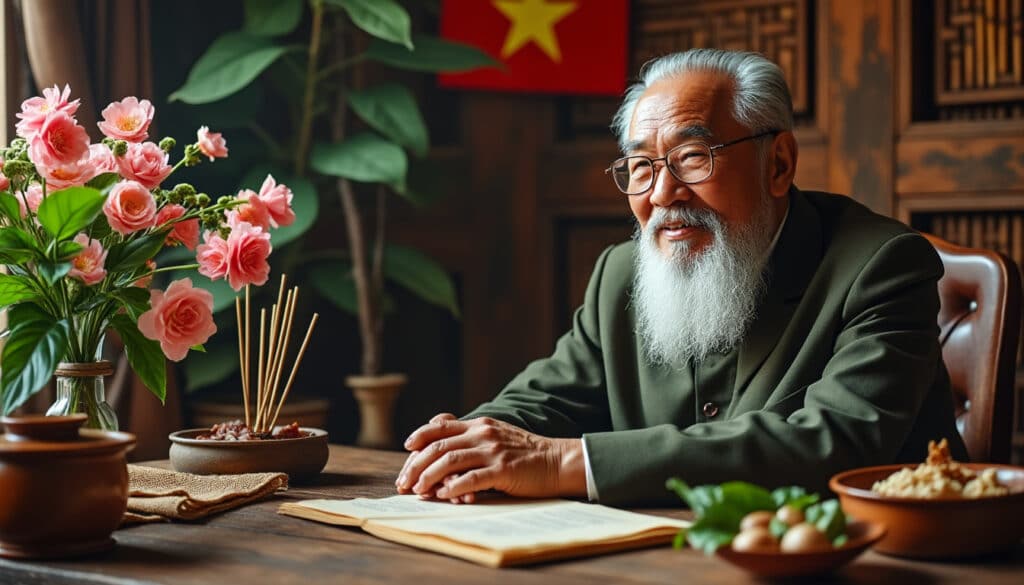
What does Ho Chi Minh look, smell, feel like?
Ho Chi Minh City, often referred to as Saigon, is a bustling metropolis in southern Vietnam that offers an unparalleled sensory experience. From the sleek skyline that reflects its modern aspirations to the fragrant aromas that fill the vibrant streets,…

